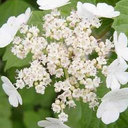In vitro anticancer activity and cytotoxicity screening of phytochemical extracts from selected traditional Chinese medicinal plants.
Avainsanat
Abstrakti
OBJECTIVE
The purpose of this study was to evaluate the anticancer activity of 10 selected traditional Chinese medicinal plants on 4 cancer cell lines, namely MCF-7 (breast carcinoma), BALL-1 (acute lymphoblastic leukemia), Huh-7 (hepatocellular carcinoma), HeLa (cervical carcinoma) and their cytotoxicity on a normal cell line, namely MCF-10A (non-tumorigenic mammary epithelial line), about which there were few reports previously.
METHODS
Six phytochemical extracts, namely petroleum ether extract (PEE), chloroform extract (CE), ethyl acetate extract (EAE), n-butanol extract (BE), the remainder after extraction (RE) and water extract (WE) from each plant were prepared. These 60 extracts were screened for their cytotoxicity on the aforementioned cell lines using MTT assay.
RESULTS
All plant species showed certain anticancer activity against at least one of the 4 cancer cell lines and obvious selective cytotoxicities were observed. Compared with Huh-7 and HeLa cells, MCF-7 and BALL-1 cells were more sensitive to the treatments of the phytochemical extracts. The PEE, CE and EAE of Brassica campestris, the PE and CE of Hibiscus syriacus, as well as the BE of Pittosporum tobira exhibited strong anticancer activity but weak cytotoxicity on the normal cell line.
CONCLUSIONS
Our results provided new evidence for anticancer activities of these plants which could be useful for developing new anticancer therapies.



